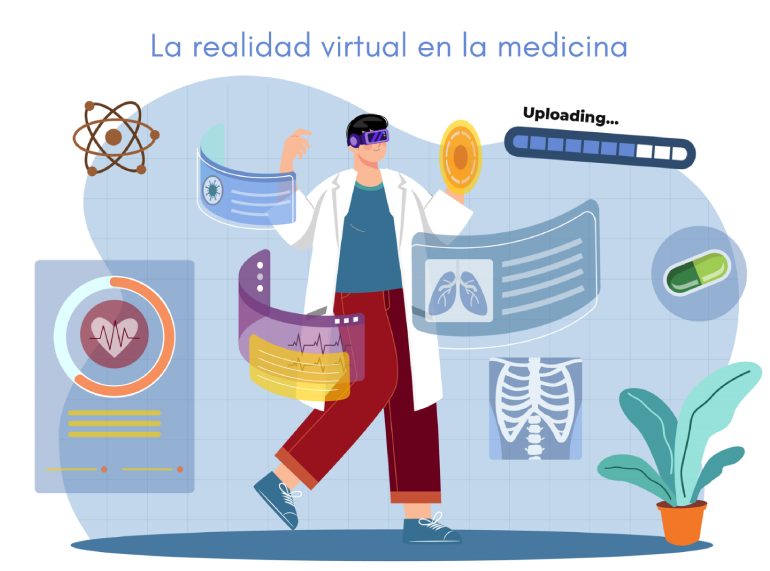It is true that virtual reality is not limited only to the entertainment industry but also has the capacity to adapt to various disciplines, such as medicine.
Virtual reality provides many possibilities for healthcare professionals, as it is increasingly being used for the treatment of mental disorders such as post-traumatic stress disorder, anxiety, depression, phobias, and addiction. In general, virtual reality can offer a more immersive, personalized, and effective treatment experience than traditional methods.
Medical Training:
There are virtual reality applications focused on medicine that allow access to the inside of the human body, which offers the possibility of inspecting in detail all the areas and crevices that would be impossible to reach otherwise.
Before, medical students did their practices with cadavers to learn about human anatomy. However, anatomical dissection and other aspects are being digitized. Many medical schools now display virtual bodies on a screen, with each of their systems and organs completely interactive, and some are even planning to abandon human cadavers altogether in favor of virtual bodies.
The arguments to accelerate the transition focus on the fact that virtual reality allows students to see minute details of any system or organ of the body in an impressive 360-degree computer-generated graphic reconstruction (CGI). Additionally, training scenarios can be created that replicate common surgical procedures. This provides students with the opportunity to practice and improve their skills without unnecessary risks to patients.
Alzheimer’s Treatment
Alzheimer’s is a disease that has no cure and can affect the cognitive abilities of patients. However, there are virtual reality techniques that can help patients recover some of these abilities. These techniques are based on the reproduction of past images, and their goal is to enhance the patient’s concentration and improve their attitude, as apathy and lack of concentration are common problems associated with this disease. By recreating events, experiences, or family gatherings, the patient’s memory can be stimulated and their quality of life improved.
Treatment of phobias
With this technology, the patient is progressively exposed to their fears in a controlled and safe artificial environment. For example, a patient with a phobia of spiders can put on a virtual reality headset and encounter the insect at a certain distance. At first, the animal may appear as a cartoon and be far away from the patient, but gradually it will take shape and approach. The goal is to gradually and controlledly reduce anxiety thresholds to help the patient overcome their phobia.
Some advantages of using virtual reality for phobia treatment are:
- The profesional can control and modify the degree of interaction between the environment and the patient at all times.
- The effects experienced in virtual reality persist in reality. The results obtained and sensations are generalized in real environments.
- The traditional method for facing phobias is to imagine the situation. With virtual reality, we can avoid this step, exposing the patient to the problem and speeding up the process.
In general, virtual reality can provide a valuable tool for improving medical training, the accuracy of surgical procedures, and the therapy of certain medical and psychological conditions. By allowing detailed and precise simulation of anatomy and medical procedures, virtual reality can greatly enhance medical education and clinical practice.

